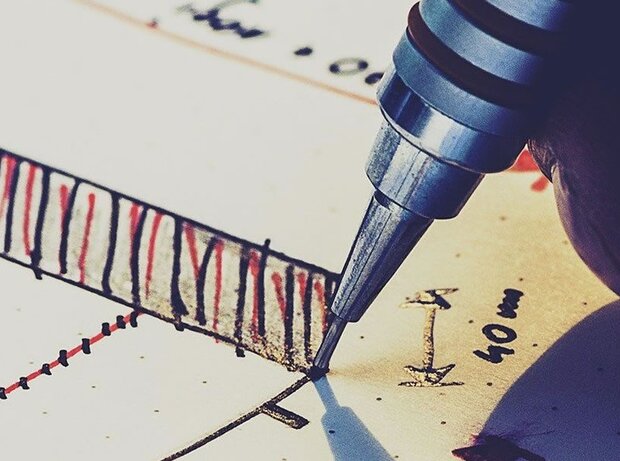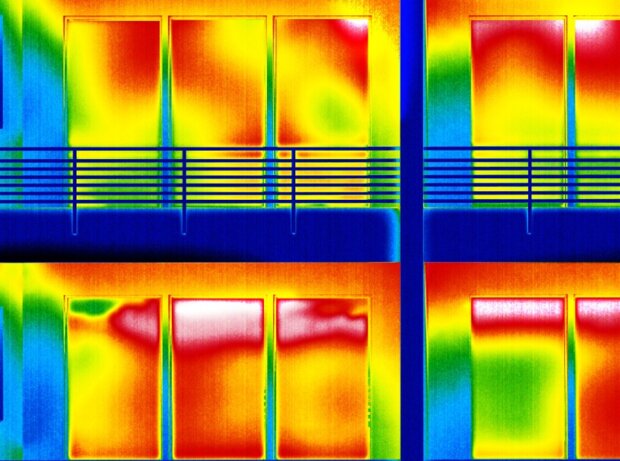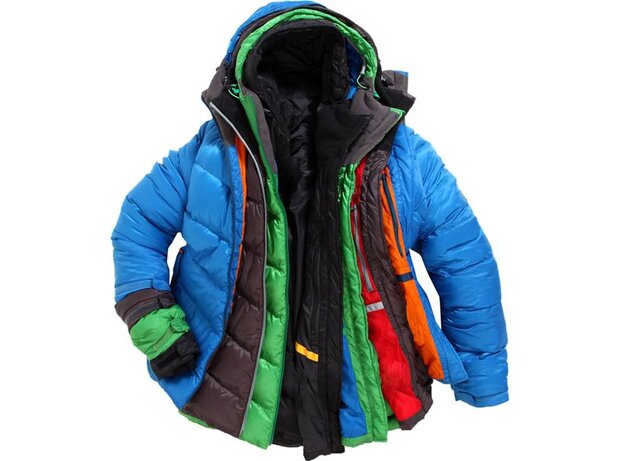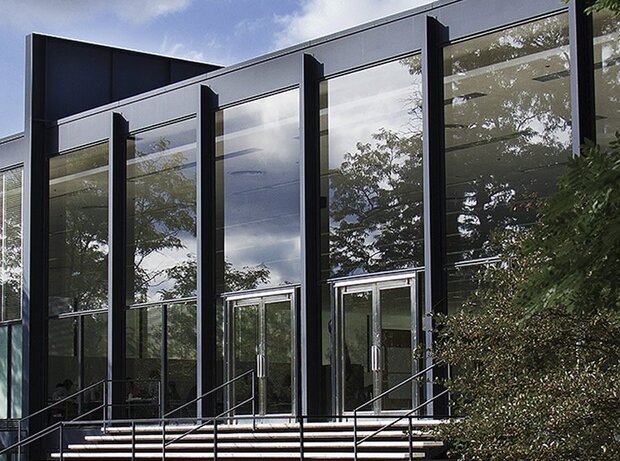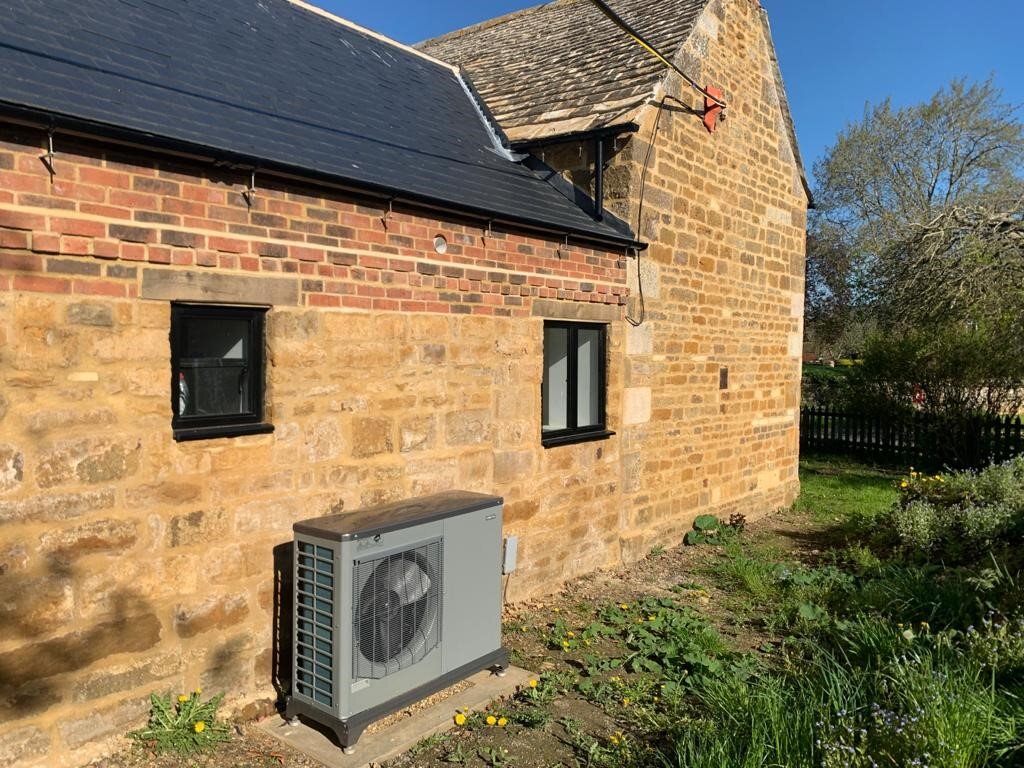
Heat Pump Retrofit: Part 1 – Easier Than You Think
Heat pumps will be vital in decarbonising homes—new and old. Discover what to expect and how to plan for a smooth and effective retrofit in your existing home.
Decarbonising heat in buildings is a critical part of the journey to net zero. And pretty much every analysis agrees heat pumps will have a major role to play.
As it happens, my own gas boiler is due for replacement. So I wanted to find out – can I replace it with a heat pump? Well, it looks like I can! And as a construction writer, of course I want to share my research. This is not SIGA’s area of expertise so this is very much a personal view, and not theirs, but I hope you find it interesting.
The blog is in two parts – maybe SIGA will let me come back and write part 3 when I have carried out an installation of my own!
In November 2020, the UK Prime Minister published a ten-point plan for the country to get to zero carbon. It included a target of installing 600,000 heat pumps a year by 2028.
This is ambitious – it represents 20 times more installations than happen today. But it still falls short of many expert recommendations. The UK Committee on Climate Change [CCC], set up to advise the government on climate policy, says the UK needs to install 1 million heat pumps each year.
Ireland‘s 2019 Climate Action Plan sets a target for installation of 400,000 heat pumps in existing homes by 2030 – and the government recently consulted on ambitions to 2050.
Heat pumps are unfamiliar but they are not new
Heat pumps use power (usually electric) to move heat from one place to another, and can do so extremely efficiently. When properly set up, they supply several times more heat than the energy used to run the pump. This gives them an effective ‘efficiency’ well above 100%.
Heat pumps are not new technology – in fact you have probably already got one in your kitchen, in the back of your fridge, moving heat out of your milk and vegetables, and into the room.
Heat pumps will reduce carbon emissions
The reason that heat pumps are more attractive now than ever before is because of the urgent need to reduce carbon emissions.
This is already driving the decarbonisation of mains electricity. Add to that the way heat pumps use a little energy to produce a lot of heat, and the heat supplied by a heat pump becomes genuinely low carbon.

Renewable generation is rapidly decarbonising our electricity
Many heat pumps will need to go into older homes
It is relatively straightforward to build a new home with a heat pump. But most of the homes we will be living in in the coming decades already exist. And most are still heated with fossil fuel. So heat pumps will need to be installed in many existing homes as well.
Heat pumps are currently mainly seen in rural areas without mains gas. Many households are also keen to go ‘clean and green’ and install a heat pump. But people are often unsure as to whether their own home is suitable, whether a heat pump will really suit them – and whether they can afford it.
This series of two articles looks at some of the things you need to think about if you are considering retrofitting a heat pump. We’ll also hear about some successful retrofit installations.
The articles focus on air-to-water heat pumps, commonly known as ASHPs (air source heat pumps). For most homes these are the simpler and cheaper option. For a very large house a ground source pump may be more appropriate. For smaller apartments, air-source heat pumps may not be suitable because of limited space and access. In this situation, air-to-air, communal loop or combined pump and cylinder systems are often more appropriate.

A heat pump installed in a renovated stone house in rural Leicestershire. Photo courtesy of IMS Heat Pumps
Can I install a heat pump in my home?
For a regular British or Irish house (or ground floor flat), the answer is almost certainly yes. Air source heat pumps have been installed in a huge variety of different existing homes, from compact urban terraces to draughty old farmhouses.
Heat pumps are a different sort of heating though, with their own requirements. Replacing a fossil fuel boiler with a heat pump is not just a like-for-like swap.
Fossil fuel boilers use a flame, so they are hot, sometimes supplying heat at 70 degrees or even more. But heat pumps release low temperature heat (as low as 30-50 degrees).
This means doing things differently. Although the changes needed might not be drastic, it is important to get them right.
It is also important to bear in mind that the heat pump works as a system. The pump, the radiators and hot water cylinder, the building, and the controls, all work together. All need to be taken into account to design the best set up for you.
As a would-be customer, it is really helpful to understand how heat pump systems work. This can help you get a good installation, and to get the best out of your system once it is in place.
Does my house need to be insulated?
It is sometimes said you “cannot” fit a heat pump in an uninsulated home. This is not really true. Heat pumps can be fitted in a minimally insulated home, and heat it very well. (See the case study on an unimproved house in Part 2.) However, the system will need to be larger (and more expensive) than if you had more insulation. Unsurprisingly, it will also use more energy, and cost more to run. Some level of insulation is usually required if you intend to claim a subsidy, too.
Improving the fabric of your home is well worth doing for all kinds of reasons. And it makes a heat pump installation easier and cheaper. But if there are obstacles, either permanent or temporary, to insulation, you can still have a heat pump. There is more information on this in Section 2.
What else do I have to think about?
For an effective – and cost-effective - heat pump system you will need:
- Large enough radiators. Most heat pump installations include the addition of at least one or two new radiators. Underfloor heating can make a good system even better, but is seldom essential.
- A hot water tank or heat store (if the heat pump is going to supply your hot water). Unlike with a combi boiler, the gentle, steady action of a heat pump means hot water isn’t heated as fast as you run it from the shower or tap. It therefore needs to be heated in advance and stored.
- Somewhere outdoors (close to the house) to position the pump itself
Showing how it’s done: a heat pump retrofit programme that helps Irish households be cleaner, greener and very very cosy
The Superhomes programme in Ireland helps people to improve the fabric of their homes along with installation of air source heat pumps. The programme was set up by the Tipperary Energy Agency with government support.
The fabric improvements include insulation, airtightness, and installation of whole house, demand-controlled ventilation. Radiators are replaced or supplemented as needed to enable the heating to run at low temperatures.
Householders receive a grant of around 30%, and invest the rest themselves. Most retrofits pay back in around 10 years.
The first phase of the programme was monitored in detail. The heat pumps reliably achieved winter COPs of three or higher, cutting heating costs and greatly reducing emissions. Householders reported that their homes were much more cosy and comfortable. They also noticed a decrease in condensation and mould.
Paul Kenney, who ran the first phase of the programme, explains that all elements of the retrofits worked together to enable comfort and efficiency. He told a heat pump training course from Carbon Coop:
The air leakage and design of the ventilation systems is very important. Airtightness is fiddly to achieve but we did well: we aimed for 5ach @50 Pa but achieved 3.5 in most homes.
The airtightness and ventilation, the insulation, and the constant, affordable heat were all important to the comfort and the improvement in indoor conditions, he said.
The systems were designed to a minimum temperature of -3 degrees “but during the ‘Beast from the East’ in 2018, temperatures went down to -6, and we had no complaints , just lots of positive emails. People were happy because the colder it got, the more money they were saving!”
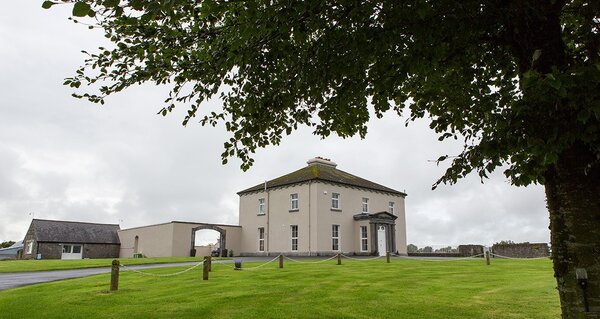
This house in the Tipperary countryside is one of the larger homes to have undergone a ‘Superhomes’ retrofit.
What is a heat pump, how does it work?
Heat pumps take advantage of the cooling effects of expansion and evaporation, and the heating effects of compression and condensation. The two processes both take place in the pump circuit, but are separated, so the outdoor environment is cooled, and the indoors is warmed up.
A heat pump circuit is filled with a volatile fluid, known as refrigerant – so called because of heat pumps’ important role in cooling. Different refrigerants can be used. In the past, halogenated hydrocarbons were the main refrigerants, and these are still common. But these substances have a high global warming impact if they leak into the atmosphere (either from the factory, or from the pump itself). Heat pumps are increasingly being made with different refrigerants, such as propane or carbon dioxide, that have a much lower global warming potential.
The electrically powered pump drives refrigerant around a closed loop. Refrigerant is evaporated by drawing heat from the outside air. The pump compresses it to heat it up and “squeeze” the heat into the house.
The gas condenses under pressure and as it does so it transfers heat to the house. The condensed refrigerant is allowed to expand again, cooling to below the outside ambient temperature, ready to draw in more heat from the air.
The newly warmed vapour is compressed and pumped back around, repeating the cycle.
Heat pump heat is gentle heat
Think of the heat pump as ‘lifting’ the heat it collects from outdoors from a lower to a higher temperature. This makes it easier to visualise that the higher the lift, the more work the pump has to do. (It has to squeeze harder!)
If the temperature of the heat source is lower, or the temperature supplied inside is higher, the pump has to ‘lift‘ the heat further. This this means more work and thus more electricity, to supply the same amount of heat into the building.
Every 1°C reduction in this temperature difference can improve efficiency by 1.5%-3%. So heat pumps are most efficient with large radiators warmed to a low temperature (say 40 degrees), and run for longer.
Hot water needs to be a bit warmer than 40 degrees. Most heat pumps heat the water to 50 or 55 degrees. (50 degrees is still more than hot enough to scald you!).
The performance factor
The efficiency of a heat pump is known as performance factor. Because a heat pump consumes less energy in electricity than it supplies in heat, the efficiency is above 100%: it is therefore simply expressed as a multiple.
Thus if a heat pump draws 2kW of power, but is putting 6kW of heat into a building, its performance factor is 6/2=3. This instantaneous performance factor is called the “coefficient of performance” – or COP. In other words, a COP of 3 means the pump is adding two units of free, renewable heat energy to every unit of electrical energy used to power the pump.
The efficiency of a heat pump can be looked at two ways. The first is the COP, as above. The second is the overall efficiency of the system (heating and hot water), averaged over a full year. This is called the seasonal performance factor, or SPF.
Efficiency depends on the temperature difference
The efficiency of a heat pump varies across the day, and across the year. This is because it depends on the temperature difference between the outside (heat source) and the heating supply. The COP is therefore better in mild weather than in very cold weather, and better heating radiators to 40, than hot water to 50.
The seasonal performance factor takes all these variations into account. It represents the overall performance of the system, and therefore, the bills.
A good ASHP installation in the UK or Ireland should have a seasonal performance factor (SPF) around 3 or better. (People sometimes express seasonal performance as ‘average COP’ which has a similar meaning.)
Sometimes it is not possible to create an ‘ideal’ system, and the SPF is lower. A heat pump system with an SPF as low as two would still represent an efficient and low carbon way to heat. But because electricity is more expensive than other fuels, it might be relatively expensive, particularly in the UK.
Heat pumps, energy and carbon
The heat collected by a heat pump whether it is in the air, water or the soil, originates from the sun, so is fully renewable.
The electricity that drives the pump is also increasingly renewable. In the UK, grid electricity is over 40% renewable. This means that on average electricity is lower carbon than gas – a massive change from just a few years ago.
In Ireland the percentage of renewable power in the grid is also around 40%. The carbon intensity of mains electricity is higher than in the UK, because the Irish grid still burns coal. But this is rapidly being phased out. And in Ireland, the main competitor to heat pumps is oil boilers. These are much higher carbon even than the gas boilers that dominate in the UK.
A heat pump adds two or three units of pure renewable heat to each unit of grid energy consumed.
This means the total renewable content of the heat supplied is very high, and the carbon intensity of the heat is very low, easily beating coal, oil, LPG and gas.
United Kingdom
| carbon intensity of heat (UK comparison): | 2020 g/kWh (approx) |
|---|---|
| Gas boiler at 90% efficiency 184 x 100/90 | 200 |
| Heat pump SPF of 3 on average grid electricity = 180/3 | 60 |
Ireland
| carbon intensity of heat (IE comparison): | 2020 g/kWh (approx) |
|---|---|
| Oil boiler at 90% efficiency 300 x 100/90 | 333 |
| Heat pump SPF of 3 on average grid electricity (estimated)* 300/3 | 100 |
* Around 7% lower than 2019 figure of 324, based on a extrapolating the recent year on year trend of >10% annual reductions. Figures from EST, SEAI, Global Data Energy
Real-life monitoring shows impressive results
Heat pump users who have monitored the energy and carbon performance of their retrofitted heat pump systems have reported impressive emissions savings compared to gas.
Trystan Lea has installed an air-source heat pump in a relatively un-insulated terraced house [see case study in Part 2]. He calculates that he has achieved an 82% reduction in CO2 compared to mains gas. This was based on an average heat pump COP of 3.9.
Researcher Richard Lowes estimated 75% emission reductions versus gas for winter-time heating and hot water, based on monitoring his energy use and the average grid emissions. His coefficient of performance over last winter was 3.7. The carbon intensity of the heat was just 48gCO₂/kWh. “This is over a 75% reduction compared to a gas boiler.”
Jan Rosenow of the Regulatory Assistance Project believes heat pumps are currently far and away the best option for decarbonising heat. Even using the most conservative assumptions, he says, a heat pump can cut emissions by 40% compared to gas. And the carbon intensity of electricity is falling all the time. By contrast, he points out, future carbon reductions for gas or swaps for hydrogen are far in the future, and may not happen at all.
Costs
Capital costs
How much installation costs depends on many factors. Although total costs can be quite high, you may be able to recoup a lot via a subsidy – see below.
The smaller your heat load (ie the better your building fabric) the less you need to spend.
You will need to budget for:
- A good survey, and calculations of room-by-room heat loss: needed to correctly size both the pump and the emitters. Sometimes this is included in the installation cost, but you may nonetheless wish to commission an independent survey – particularly if you also want advice on improving the building fabric.
- The pump itself, and any new heating controls, emitters, cylinders and plumbing that may be needed
- Aftercare from the installer – sometimes included as standard.
Can I get help with the cost?
Governments in the UK and Ireland recognise that heat pumps are beneficial to the climate, but capital costs can be high, so they offer grants and allowances to help.
Different nations have different schemes.
UK
The main payment currently available is the Renewable Heat Incentive (RHI) which pays a monthly allowance over seven years. The RHI is fairly generous, and may pay back most of the capital cost. However the RHI is due to be phased out in 2022, to be replaced with a simple capital grant via the Boiler Upgrade Scheme. At £5000, this is less generous than the RHI (although it will be paid upfront).
Scotland
If you are in Scotland, you should be able to get a government loan via Home Energy Scotland, and a ‘cashback’ scheme was also set up in November 2020.
Northern Ireland
Some grant assistance may be available through Power NI.
Ireland
Help may be available via the Sustainable Energy Agency and through Electric Ireland.
Heat pump support generally requires a minimum level of energy efficiency. In some areas, heat pump support can be linked to additional financial support for fabric efficiency work. Elsewhere (eg in England) government support is more fragmented. For more information on support for heat pump installations, see this blog from Exeter University.
Installation costs are expected to fall as heat pumps become more common – in particular, as larger numbers are installed in new homes, under new low-carbon regulations. Energy supplier Octopus Energy is building a training centre for heat pump engineers, and believes that within a couple of years they will be able to halve the installation costs.
What will my running costs be?
If you are replacing an oil or LPG (liquefied petroleum gas) system, your running costs are likely to drop, even before any subsidy is applied. This is on top of a very large saving in carbon, (and with oil, a welcome end to the smell of fumes).
However electricity is disproportionately expensive compared to gas, particularly in the UK. Electricity costs include almost all the energy levies – including those related to carbon – despite the fact that it is gas that is the higher-carbon fuel. (There are suggestions that this is set to change – but if it does, it will not happen quickly). This cost difference makes it harder for a heat pump installation to match the running costs of a gas system. Nonetheless, with a good system, installers say it can be done.
If your home can remain comfortable for a few hours without extra heat, you can also exploit a time-of-use tariff to avoid peak pricing, and buy your heat more cheaply. This can save 1/4 or even 1/2 of your electricity costs, calculations suggest.
Trystan Lea (see case studyin section 2), whose system has an SPF close to 4, takes advantage of a time of use tariff to keep his fuel costs extremely low. He has estimated a unit cost for heat of below 3 p/kWh. “This is 43% cheaper than we would have paid had we used gas,” he says. The energy itself was 30% cheaper, plus they no longer had to pay an additional standing charge for connection to the gas supply.

Kate de Selincourt
Kate is a writer and researcher specialising in sustainable and healthy building and retrofit.


